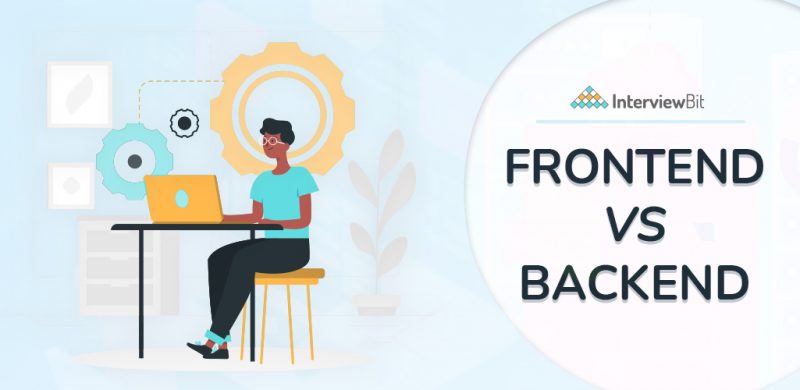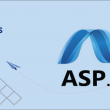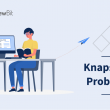- Introduction
- What is Frontend?
- What is Backend?
- Features of Frontend
- Features of Backend
- Technologies Involved in Web Development
- Front End Development Languages
- Front End Frameworks
- Back End Development Languages
- Back End Frameworks
- Difference Between Frontend and Backend
- Full Stack Web Development
- Conclusion
- Frequently Asked Questions:
- Q.1: Is C++ front end or back end?
- Q.2: Which pays more? Front end or back end?
- Q.3: Is front-end development dying?
- Q.4: Is the front end a good career?
- Q.5: Is Python for the front end or the back end?
- Q.6: Should I learn front end or back end first?
- Additional Resources
Introduction
Search for something on Google, and one ends up getting multiple results to check. Once clicked, every result will open up into something beautiful, colourful, responsive, and functional that catches the eye. It amazes us to see how every click on these results makes changes as per our wishes. These beautiful things are called websites, and building them up is known as web development. The term web development starts to sound familiar because it has been one of the most trending skills to acquire for every person in the IT field.
Web development is one of the most important parts of IT as it helps build a bridge between consumer and provider. And, of course, it helps in making complex tasks automated through different functionalities. The integral parts of web development are Frontend and Backend. What are these parts? Are they as dissimilar as their name suggests? How much does the functionality of a website depend on them? Is one of them above another?
What is Frontend?

As the name says, Frontend is something that a user can see, interact and experience. It majorly involves programming or coding the parts of the website and applications that are visible to the user. The person who develops the front end is known as a Front End Developer. The work of a Front End Developer is to build on the User Interface and User Experience designs which are the key elements of bringing design to life. Key skills of a Front End Developer include knowing HTML, CSS, JavaScript, and frameworks such as Angular JS, node js, etc. Along with this, knowledge about the version control system like GIT and GITHUB adds to their treasury. A Front End Developer is an imperative part of web development, as they provide the structure needed for feasible working.
Confused about your next job?
What is Backend?
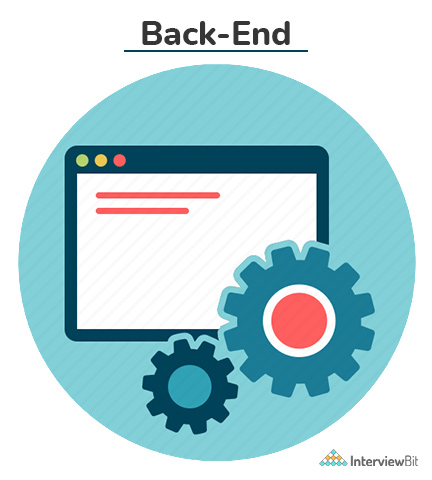
Backend or Backend development is like behind the scenes of a movie or show or in our case, the frontend. Actions taken by the user are analyzed, fetched, and delivered back by the backend through the codes written. The person who develops the back end is known as the Back End Developer. The major work of a Back End Developer includes linking every aspect of the front end together and with the databases. The primary skills of a Back End Developer include knowing back-end languages such as Python, Java, Ruby, etc. Other skills include a sound understanding of Database Management Systems (DBMS) and Application Program Interfaces (API). The back end is very crucial as it gives purpose or functionality to the beauty of an app or website.
Features of Frontend
Along with its wide range of functionalities, the front end comes with a lot of features.
- Client Side Rendering: It allows developers to render the entire website on the browser of the user locally with JavaScript.
- Server Side Rendering: It allows the rendering of sites directly on the users’ browser based on the changes requested by the user.
- Optimization: Fine tuning of HTML, CSS, and JavaScript ensures fast loading of sites for the users.
Features of Backend
Like the frontend, the backend also comes with multiple features that are beneficial to the developers.
- Databases: It involves storing of necessary data of the users.
- Website Architecture: It involves understanding the goals that are needed to make the application.
- Scripting: It involves the proper formatting of the framework.
- API: Application User Interface or APIs are tools that help in communication between machines and deliver the necessary data.
Technologies Involved in Web Development
Front End Development Languages
- HTML: HyperText Markup Language or famously known as HTML, is a markup language that is used in the construction of web pages. The language comes up with elements that provide the basic layout for a website. Along with giving structure to the websites, it also renders images or visuals. Its advantages include simple usage, multiple browser support, and a combination with other languages. Its disadvantages are the static nature, security, and huge pile of code.
- CSS: Cascading Style Sheets or CSS is like the interior designing of a website. CSS narrates the HTML part that gets rendered during the development. CSS is simple as language is more or less basic English. Its advantages include multiple browser support, easiness, and speed. Its disadvantages include cross-browser breakage and tediousness to beginners.
- JavaScript: JavaScript is the most important and popular front end development language. It provides flexibility and responsiveness to the website. Advantages include simple nature, speed, and additional or extended functionality like creating dialog boxes, forms, pop-ups, etc. Disadvantages are difficulty in debugging and browser support. However, Javascript is also used in backend development.
- Elm: Elm is a simple language that is used to make swift and seamless websites.
- SASS: Syntactically Awesome Style Sheets or SASS is another scripting language like CSS. SASS comes with unique features that give users a smooth experience. Advantages include reusability and clear codes. Disadvantages include troubleshooting and compilation.
- Jquery: Jquery is a JavaScript library that enhances HTML traversing, event handling, and animations. It is very concise and helps in shortening the lines of code written.
Front End Frameworks
- vue.js: It is a framework built around JavaScript and is used in building compact web applications.
- AngularJS: A web framework built around JavaScript. It provides appealing features to the HTML templates and increases the performance.
- React: It is a popular JavaScript framework that enhances the User Interface components and provides a dynamic nature to web applications.
Back End Development Languages
- Python: Python is a widely used back end developing language. Its preference is based on its advantages like a huge collection of libraries, easy code readability, integrations, versatility, etc.
- PHP: It is another widely used language in back end development. Its features include security, cross-platform compatibility, object-oriented programming features, and integrations with databases.
- Java: Java is popularly used in the building of android and desktop applications. Its other feature includes automatic memory allocation, portability, and a one-time compilation.
- Ruby: Ruby is a general-purpose language that comes in with features such as a large standard library, flexibility, scalability, etc.
Back End Frameworks
- Django: It is a high-level web framework that comes with built-in plugins. It is best for large-scale, data-driven interactive web applications. An additional benefit includes customizability. However, it is not recommended for small-scale projects as it fills it up with unnecessary characters.
- Flask: Flask is a microframework based on the python language. It does not need any libraries or tools and is hence suitable for small projects. Nevertheless, integrations can be achieved to extend its work.
- Ruby on Rails: Ruby on Rails is a web application framework written in the Ruby language. It is used in the development of flawless data table formation and migration. Easier compilation and testing are an added advantage.
- CakePHP: CakePHP is a popular web framework for PHP. It is used in the development of both small and big applications as it is easier to configure and provides complete security.
Difference Between Frontend and Backend
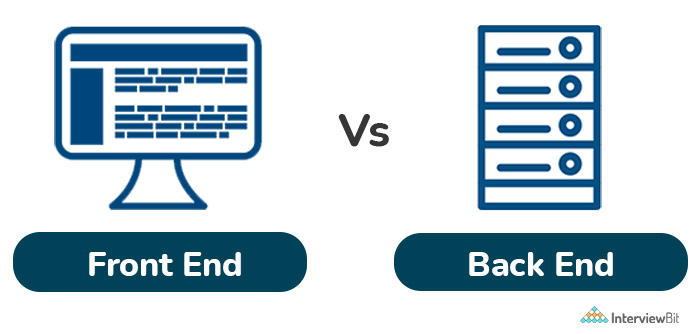
Key differences:
- The front end is the interactive part of the website or application. The Graphical User Interface(GUI) allows users to take actions as per their wishes. Users can see and interact with the front end. The backend of a website or an application cannot be seen by the users. It collects the information from the users, processes, and handles the functionality of the application.
- The desirable work of a front end developer is the designing of layouts and the desirable work of a back end developer is to attain a functional stage.
- Front end developers need to have an idea of the back end. Thus front end development is not only about beauty. While back end development is mostly about logic, calculations, servers, API’s and testing. A collaboration between the front end developers and back end developers is very crucial and data is passed through particular data formats.
The major differences between Frontend and Backend Development
| Basis | Front End | Back End |
| Definition | Front end development involves the effective implementation of visual components of a web application | Back end development involves the effective implementation of functions of a web application that includes databases, server management, etc. |
| Skills Required | The skill set required for the front end includes HTML, CSS, SASS, JavaScript, etc. | The skill set required for the back end development includes Python, Ruby, Java, PHP, etc. |
| Independence | Front end development cannot work independently except in the case of static sites. | Back end development works independently of the front end as Back end |
| Goal | The goal of the front end development is to ensure that the application is accessible by everyone and it remains responsive on all the platforms such as desktop, talbot, and phone. | The goal of the back end development is to ensure that the application runs under all the provided cases, be scalable, and work efficiently with low latency without fail. |
| Development Team | The work of the front end development team is to design and develop the appearance of the application based on the user’s input and test it. | The work of the back end development team is to assist the front end in linking pages up, provide security and support to the users. |
| Frameworks Used | AngularJS, React, vue.js, etc. | Django, Flask, CakePHP, Laravel, Ruby on Rails, etc. |
| Additional skills | A good understanding of UI and UX designing. | Logical reasoning and problem-solving. |
| Average Salary | The average salary of a Front End Developer is 523200 INR per annum. | The average salary of a Back End Developer is 748610 INR per annum. |
Full Stack Web Development
It refers to the development of both the front end and the back end portions of the web application. The people who are involved in this development are known as Full Stack Web Developers. They have the quality and skill to develop front end, back end, database, and debugging all by themselves. The average salary of a full stack developer is 650000 INR annually.
Conclusion
Web development is an interesting branch in the field of technology. Front end development is like the exterior of a house; The paint, the wall carvings, the wall hangings, or anything that a person can see and feel. The back end is like the electric supply, the construction materials which one cannot see, but is crucial for the house. It is only together that these two things make an application look and function in the best way possible.
Frequently Asked Questions:
Q.1: Is C++ front end or back end?
A: C++ is a general-purpose language that is used for back-end work. It is majorly used in building applications that require high performance such as mobile sensor applications, real-time simulations, etc.
Q.2: Which pays more? Front end or back end?
Ans: The average difference between the pay cut is 1% and the back end pays more. However, based on expertise, city of work, and skills, the pay varies.
Q.3: Is front-end development dying?
Ans: The front-end development is not dying but there’s certainly nothing new coming out of it. Moreover, the majority are turning out to be full-stack developers.
Q.4: Is the front end a good career?
Ans: Yes. The front end development is a good career. With emerging technologies, opportunities also increase.
Q.5: Is Python for the front end or the back end?
Ans: Python is a back-end development language. It is used to give functionality to the application. Interestingly, python libraries such as Streamlit, Tkinter, and PyQt can be used to develop Graphical User Interfaces.
Q.6: Should I learn front end or back end first?
Ans: It depends upon the interest and specialization you want to undergo. If you’re interested in the design aspect, the front end would be great. If you’re good at logical thinking, API, and server management, the back end would be better.


